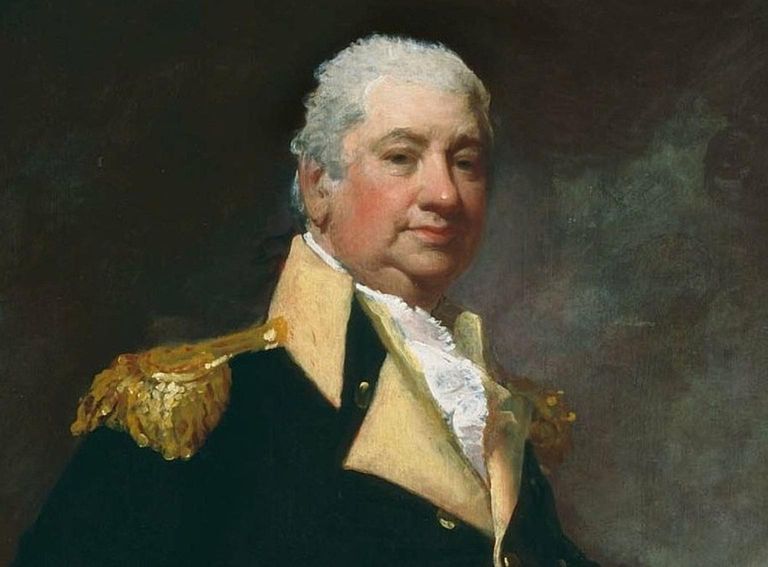Henry Knox was an officer of the Continental Army in the Revolutionary War. In 1775, Knox was commissioned a colonel and tasked with bringing cannon from Ticonderoga, which was recently captured by Benedict Arnold and Ethan Allen. In November of 1775, ex-bookstore owner Henry Knox, the twenty-five-year-old colonel commanding the colonial artillery— his military knowledge, like Greene’s, was all from reading—requested that he be allowed to arrange for the guns at the captured British fort of Ticonderoga to be moved to Boston. It took ten weeks, but during the first part of February 1776 the guns began arriving at Cambridge.
In a feat inaccurately heralded by many historians as one of the most outstanding of the Revolutionary War, Knox brought sixty tons of guns and supplies—forty-three cannon, three howitzers, fourteen mortars of various sizes, twenty-three kegs of cannon and musket balls, and other items—almost three hundred miles on sledges through deep snow and very poor roads to the besieging army. Knox’s men experienced only a small fraction of the hardships endured by Arnold’s troops on their trek to Quebec, but Knox became an American hero and Arnold—his achievements not sufficiently appreciated—drifted into resentment.
Henry Knox’s Cannon Run
-
- Fort Ticonderoga had a large number of cannon that Washington badly needed.
- Washington tapped Henry Knox, who proposed to personally lead an exhibition to bring the artillery to Washington’s army.
- Henry Knox mini bio: Born in 1750 in Boston to a shipmaster who was lost at sea when Henry was 9. From then on, he worked to help support his family. He was almost entirely self-educated (like Washington and Nathanael Greene). He eventually became a successful bookseller. He loved reading about the military arts, as did Nathanael Greene, with whom he became good friends. He was 6 feet tall and around 250 pounds. He had lost two fingers in a bird hunting expedition prior to the war.
- Henry Knox took a small group of soldiers to Ft. Ticonderoga and brought back over 50 cannon on 42 sleds pulled by 80 yoke of oxen.
- He brought them over a frozen lake and rivers through very difficult terrain (roads were nonexistent) arriving near Boston in late January. By this time, the British had planned to evacuate Boston.
- Washington wanted to attack the British in Boston, but his subordinates advised against it. They suggested that the cannon be installed on Dorchester Heights. Washington agreed to this plan.
- The Patriots placed bales of hay along the shore so that the British could not see what they were doing. They also built the elements of a redoubt off site where they could not be seen. To distract the British, they bombarded Boston. The British fired back.
- During the night of March 4, the Continentals dragged the parts of the redoubt up onto the heights and finished building it. The next morning, the British woke to see the completed redoubt on the heights with several thousand men and 20 cannon guarding it.
- General Howe is supposed to have said “My God, these fellows have done more work in one night than I could make my army do in three months!”
- On March 17, 9000 British soldiers, their dependents, and 1000 Loyalists left on 78 ships.
Additional Resources About Revolution and Colonies
Cite This Article
"Henry Knox: American Revolutionary War General" History on the Net© 2000-2024, Salem Media.
April 18, 2024 <https://www.historyonthenet.com/henry-knox>
More Citation Information.







